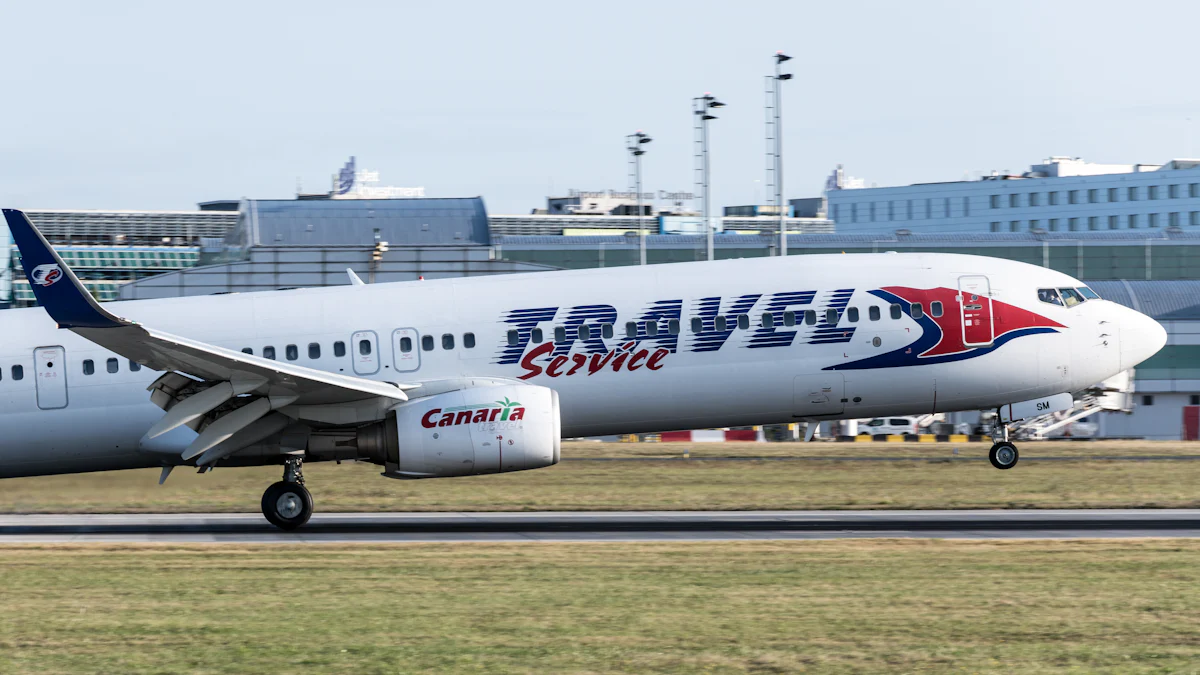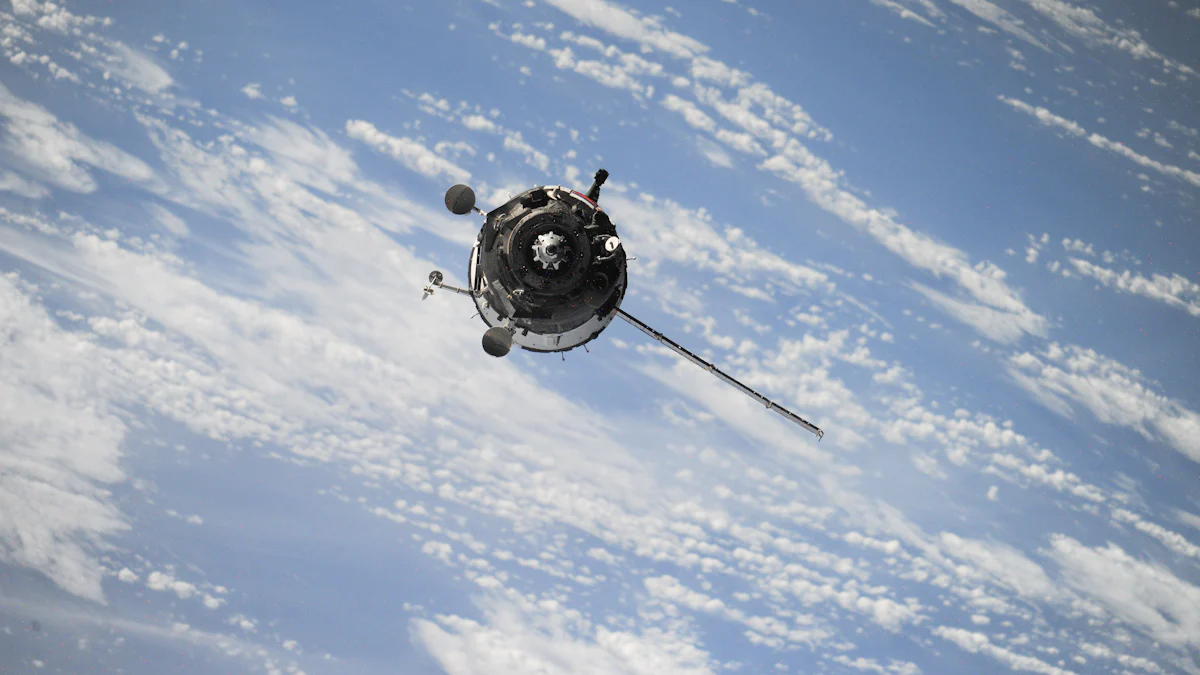Flight: The Complete History of Aviation

Aviation has captivated humanity for centuries, transforming the history of flight by connecting the world. The skies have opened new possibilities for exploration and innovation. Aviation significantly contributes to the global economy, representing about 3.5% of global GDP. In 2017, airlines carried around 4.1 billion passengers, highlighting aviation's crucial role in connectivity. This industry generates economic growth and creates millions of jobs. Aviation remains a preferred option for developing infrastructure. The journey from early dreamers to modern aviation reflects a remarkable history of ambition and achievement.
The Early Dreamers and Inventors
The Visionaries
Leonardo da Vinci's Concepts
Leonardo da Vinci envisioned flight centuries before it became a reality. His sketches depicted flying machines that mimicked bird wings. These designs, although never built, laid the groundwork for future aviation advancements. Da Vinci's concepts demonstrated a deep understanding of aerodynamics. His ideas inspired generations of inventors to pursue the dream of human flight.
Early Balloon Flights
The Montgolfier brothers achieved the first manned flight in a hot air balloon in 1783. This event marked a significant milestone in aviation history. The balloon ascended over Paris, carrying passengers safely back to the ground. This success sparked widespread interest in ballooning across Europe. Enthusiasts began experimenting with different designs and materials. Balloon flights became a popular spectacle, drawing crowds eager to witness the marvel of flight.
The Wright Brothers
The First Powered Flight
Orville and Wilbur Wright revolutionized aviation with their powered flight on December 17, 1903. The Wright Flyer soared for 12 seconds, covering 37 meters. This achievement marked the first controlled, sustained flight of a powered aircraft. The brothers' meticulous research and experimentation led to this historic moment. Their success paved the way for modern aviation.
Impact on Aviation
The Wright brothers' innovation had a profound impact on aviation. Their Flyer demonstrated the feasibility of powered flight. This breakthrough inspired inventors worldwide to explore new possibilities. The Wrights' achievements encouraged further advancements in aircraft design and technology. Their legacy continues to influence the field of aviation today.
The Age of Innovation
Advancements in Aircraft Design
Introduction of Metal Aircraft
Metal aircraft revolutionized aviation by enhancing durability and performance. Engineers replaced wooden structures with metal, leading to stronger and more reliable planes. The introduction of aluminum reduced weight while maintaining strength. This change allowed for longer flights and increased passenger capacity. Metal aircraft marked a significant milestone in aviation history.
Development of Jet Engines
Jet engines transformed flight with unprecedented speed and efficiency. Engineers focused on improving engine performance and fuel economy. The bypass ratio played a crucial role in optimizing jet engine design. Higher bypass ratios improved fuel efficiency and reduced noise. NASA's research contributed to aerodynamic advances, such as winglets, which enhanced range and saved fuel costs. These innovations propelled aviation into a new era.
Aviation in Warfare
World War I and II Contributions
World War I and II accelerated advancements in aircraft technology. Engineers developed faster and more agile planes for combat. Aircraft played a pivotal role in reconnaissance and strategic bombing. The wars spurred innovation in materials and engine design. These contributions laid the groundwork for modern military aviation.
The Role of Fighter Jets
Fighter jets emerged as a dominant force in aerial warfare. Engineers designed jets for speed, maneuverability, and firepower. Advanced radar systems improved targeting accuracy. Fighter jets became essential for air superiority and defense. These aircraft continue to evolve with cutting-edge technology and AI-driven systems.
The Rise of Commercial Air Travel

The Golden Age of Aviation
Introduction of Passenger Jets
Passenger jets transformed air travel in the mid-20th century. Engineers designed these aircraft to carry more passengers over longer distances. The Boeing 707 emerged as a pioneer in this field. Airlines adopted passenger jets rapidly, leading to increased accessibility. The introduction of jets marked a significant milestone in aviation history.
Expansion of Global Air Travel
Global air travel expanded dramatically during the golden age. Airlines connected cities across continents, making international travel more accessible. The aviation industry contributed significantly to global economic growth. Millions of jobs emerged due to increased demand for air travel. The expansion of air routes facilitated cultural exchange and tourism.
Notable Aircraft and Flights
The Concorde and Supersonic Travel
The Concorde represented a leap in aviation technology. Engineers designed the aircraft for supersonic travel, reducing flight times significantly. The Concorde flew between major cities like London and New York. Passengers experienced luxury and speed, making the Concorde an icon of its time. Supersonic travel showcased the potential for future advancements in flight.
Record-Breaking Journeys
Record-breaking journeys captured public imagination. Pilots pushed the boundaries of what was possible in aviation. Aircraft like the Spirit of St. Louis and Voyager achieved historic flights. These journeys demonstrated human ingenuity and determination. Each record-breaking flight added a new chapter to the history of aviation.
Modern Developments and Spaceflight

The Space Race
From Aviation to Space Exploration
The journey from aviation to space exploration marks a significant chapter in human history. Aviation laid the groundwork for advancements in space technology. Engineers transitioned from designing aircraft to developing spacecraft. This shift required new materials and propulsion systems. The focus moved from atmospheric flight to overcoming the challenges of space travel. Aviation's emphasis on safety and reliability influenced spacecraft design. The aviation industry contributed to innovations in spacecraft, leading to successful missions beyond Earth.
Key Milestones in Spaceflight
Space exploration achieved remarkable milestones over the decades. The launch of Sputnik 1 in 1957 marked the beginning of the space age. Yuri Gagarin became the first human in space in 1961. The Apollo 11 mission in 1969 landed humans on the Moon. These events demonstrated human capability to explore beyond Earth. Each milestone represented a leap in technology and ambition. Space agencies continue to push boundaries with missions to Mars and beyond. The collaboration between nations accelerates progress in space exploration.
The Future of Aviation
Innovations in Sustainable Flight
The future of aviation focuses on sustainability and efficiency. Engineers develop electric aircraft to reduce carbon emissions. Ultralight materials enhance fuel efficiency and performance. Autonomous devices improve safety and operational efficiency. The aviation industry explores alternative fuels to minimize environmental impact. Innovations in sustainable flight aim to preserve the planet while advancing technology. The commitment to sustainability drives research and development in aviation.
The Ongoing Exploration of the Skies
Aviation continues to evolve with new technologies and concepts. Urban Air Mobility introduces eVTOLs for efficient city travel. Drones revolutionize logistics and surveillance operations. Artificial intelligence enhances navigation and decision-making in aircraft. The aviation industry embraces these advancements to improve connectivity. The ongoing exploration of the skies reflects humanity's desire to innovate. Aviation remains a dynamic field with endless possibilities for growth and discovery.
Aviation continues to shape the world with relentless innovation and progress. The history of flight reveals a journey filled with ambition and achievement. Aviation facilitates global connectivity, enhancing societal development and safety. The industry plays a crucial role in socio-economic growth, acting as a catalyst for economic development. Innovation remains essential for future sustainability and efficiency. Collaborative efforts among companies, governments, and aviation authorities ensure safe and efficient operations. The ongoing exploration of the skies promises endless possibilities, driving humanity toward a future filled with exciting opportunities.
See Also
Visual Guide: The Definitive History of Britain and Ireland
Armored Vehicles: The Definitive Visual History of Tanks
Pioneers of Space Travel: From the Great Pyramids to Engineers

